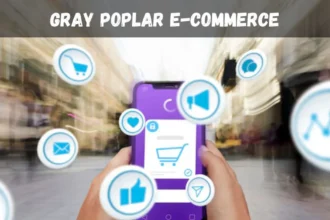In today’s fast-paced world, healthcare providers need to work quickly and carefully. One area that often slows things down is medical billing. Whether you’re running a private practice, working in a hospital, or helping patients through telemedicine, having the right billing system is key.
Medical billing solutions help manage insurance claims, patient payments, and coding. Without the right tools, it’s easy for mistakes to happen, and those errors can cost money and time.
Why manual billing causes delays and errors
Manual billing is slow and risky. When staff members enter data by hand, it’s easy to make typos, use the wrong codes, or forget details. These small errors can lead to denied claims or long waits for insurance reimbursement.
In places like mental health clinics or urgent care centers, even one small error can back up the whole system. Patients get frustrated, and providers spend extra time fixing problems that could have been avoided.
The shift toward automation in healthcare reimbursement
Because of these issues, more healthcare centers are moving toward automated medical billing systems. These tools use software to handle tasks like claim submission, code selection, and payment tracking. This helps staff focus on care instead of paperwork. It also speeds up payments and cuts down on mistakes.
Common Billing Challenges in Modern Healthcare
From dental clinics to outpatient surgical centers, billing problems can pop up anywhere. Knowing the biggest challenges helps teams find better ways to manage them.
Denied claims and reimbursement delays
One of the biggest problems providers face is denied claims. This happens when insurance companies reject a bill because of missing or wrong information. Every time this happens, staff have to redo the work, and patients may have to wait for care.
Coding errors and compliance risks
Using the wrong medical codes can lead to compliance issues. That means the provider could face fines or audits. In fields like cardiology or chiropractic care, using exact codes is extra important because services are so specialized.
Patient confusion and billing transparency issues
Many patients feel confused when they get a bill. They may not know what they’re paying for or why insurance didn’t cover something. This can lead to frustration, unpaid bills, or even negative reviews. Clear billing is part of good patient experience.
How Medical Billing Solutions Improve Workflow
Good billing software can do more than just send out bills. It can actually improve how a clinic or office runs every day.
Automating claim submissions and follow-ups
Billing solutions help by automating claim submissions. That means the system checks for errors before sending the claim to insurance. It also keeps track of what’s been paid, what’s pending, and what needs a follow-up. This saves time and helps providers get paid faster.
Reducing human error with accurate coding tools
Most billing systems come with built-in coding assistance. This means the system can suggest the right codes or warn staff when something looks wrong. That reduces human error and lowers the risk of denied claims.
Helping patients understand their bills clearly
Some tools also help explain bills in plain language. That way, patients can see what their insurance paid, what they owe, and why. This builds trust and leads to fewer billing complaints.
Choosing the Right Billing System for Your Practice
There are many options out there. The best billing solution depends on your size, specialty, and workflow.
In-house vs. third-party billing platforms
Some practices use in-house billing teams, while others hire third-party billing services. In-house teams offer more control, but they need training and tools. Outsourcing can save time but may cost more in the long run. Each choice has its pros and cons.
Integration with EHR systems and patient portals
A good billing system should connect with your electronic health records (EHR) and patient portal. This means information flows easily between systems. Staff don’t have to re-enter data, and patients can view their bills online. This saves time and keeps everything organized.
Cost vs. long-term revenue improvement
Upfront, billing systems may seem expensive. But over time, they often increase revenue by speeding up payments and reducing claim denials. For home health or hospice care, this extra income can make a big difference.
Real-World Impact of Effective Billing Solutions
When billing works well, everyone benefits—from doctors to front desk staff to patients.
Case studies of reduced claim denials
Some practices have seen denied claims drop by 30–50% after switching to smart billing software. That means less time spent fixing mistakes and more time focusing on care.
How improved billing increased patient satisfaction
Clear and accurate billing leads to happier patients. When people know what they’re paying for and why, they feel more in control. In vision clinics and physical therapy offices, this kind of transparency makes a big impact.
Growing revenue without growing staff
Automated systems let offices do more without hiring extra staff. This is helpful for small practices that want to grow but don’t have the budget to hire more employees. With better billing tools, they can serve more patients and collect more payments without burnout.
Conclusion: The Future of Medical Billing in Healthcare
As healthcare keeps changing, billing solutions are becoming even more important. They’re no longer just a “back office” tool—they’re part of the whole patient care journey.
Moving toward AI-driven billing tools
The future of billing is smart. Artificial intelligence (AI) tools are already starting to predict billing issues before they happen. They can help with coding, spot errors, and even flag unusual trends. This keeps revenue flowing and protects against risks.
Creating a smoother financial experience for patients
At the end of the day, billing isn’t just about money. It’s about trust, communication, and care. Whether you’re a mental health counselor, a surgeon, or a family doctor, clear and easy billing helps patients feel safe and supported.

















